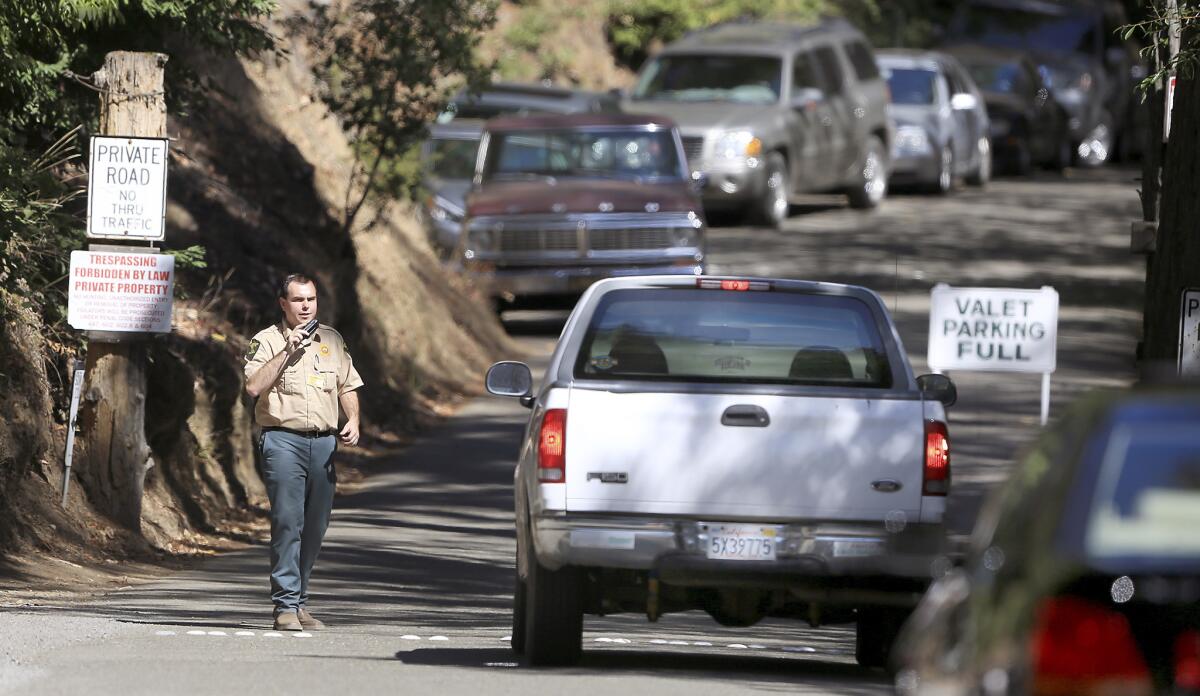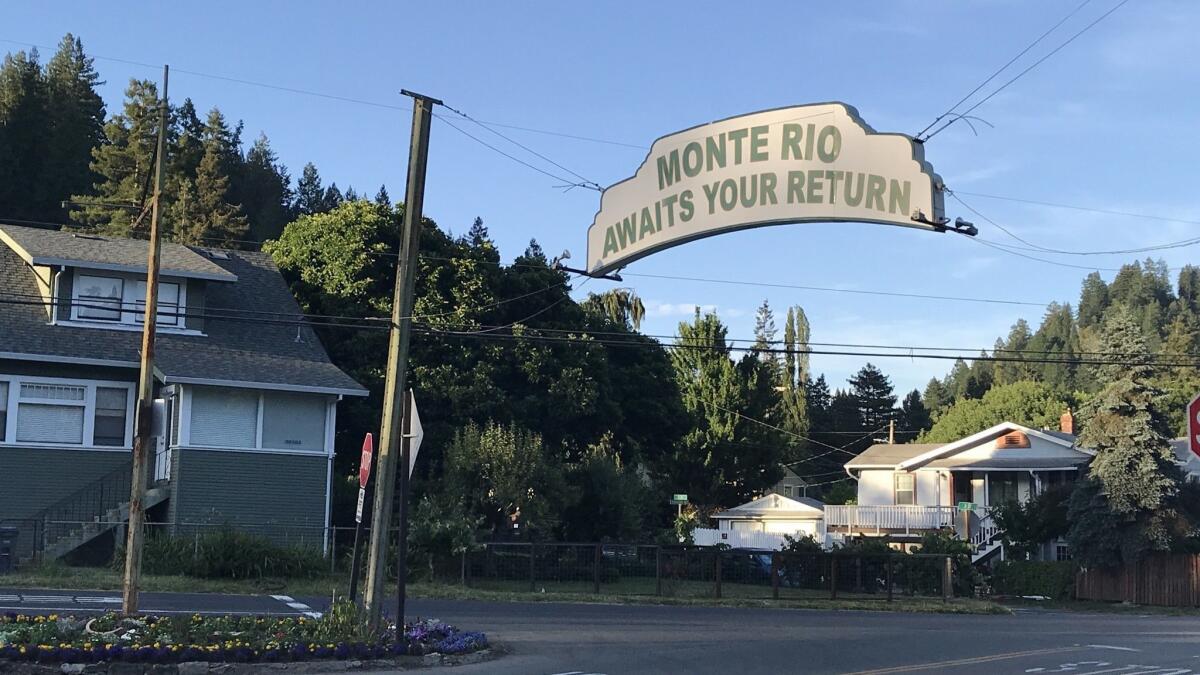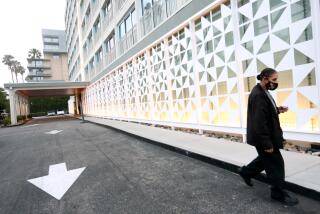Column: Why should Sonoma County provide security for an elitist, men-only summer camp?

If you read enough about the Bohemian Grove, a private 2,700-acre swath of redwood-covered land on the Lower Russian River, you come to understand there’s nothing especially mystical about the secretive, testosterone-fueled revelry that goes on there every summer.
It’s a bunch of normally uptight dudes who get to cut loose and schmooze in a glamorously rustic environment, replete with over-the-top pseudo Druidic ceremonies, musical performances, serious lakeside chats about public policy and drinking that happens early and often.
Each summer, the Bohemian Grove, a couple hours northwest of San Francisco, becomes an alternative world headquarters for about 3,000 rich and well-connected men. They are either members or guests of San Francisco’s Bohemian Club, an exclusive, all-male bastion with a waiting list that is reportedly decades long.
The Bohemian motto, “Weaving spiders come not here,” is a fig leaf, designed to play down or conceal an unassailable truth — men can make profitable connections among the redwoods.
From July 8 to 28, “Bohos” crowd the Santa Rosa airport with their private jets and helicopters, then swoop by limo or luxury car to their well-hidden wonderland in the tiny town of Monte Rio, one of the poorest communities in western Sonoma County. Some stay the whole time, some come in only for weekends.
For the last 15 years, the Bohemian Grove has contracted with the county to provide the “encampment,” as it is called, with a four-deputy detail. The cost, about $151,000, is reimbursed by the Bohemian Club. Last week, the annual contract came up for a vote before the Sonoma County Board of Supervisors.
As it happens, for the first time in history, the five-member board has a female majority. Also for the first time, not coincidentally, questions have been raised about the propriety of doing business with the Bohemians.
“How can we contract tax-funded services with a club that openly discriminates against women?” wondered Supervisor Shirlee Zane, setting off a long-overdue debate.
A few days later, her colleague, Supervisor Lynda Hopkins, penned an open letter to the Bohemian Club. The Grove is in Hopkins’ district; she is its first female supervisor. Though all of her male predecessors visited the Grove, she has never set foot on the property.
“It’s a flashback to an era when powerful men were the only dominant political paradigm, when only men could vote, when only men could have bank accounts and sign checks and pay bills,” she wrote. “The Club has been around for 150 years. A lot has changed in that time. But the Club hasn’t. I think that’s what makes it so great for members, and so utterly incomprehensible to the rest of us.”

The Grove’s manager did not respond to my emailed request for a comment.
On Tuesday afternoon, Hopkins and I met in a Santa Rosa coffee shop. That morning, she and the rest of the board had voted unanimously to honor the security contract with the Bohemian Grove, mainly because the event is only a month away.
I asked her how, exactly, women are disadvantaged by the all-male enclave.
“Granted, I have only been in politics for 2 ½ years,” she said, “but I have learned that it’s all about relationships. Your currency in your community is really all of the people that you know, who trust you. When you look at the Grove, where it’s about people coming together for a good time, that creates the currency of relationships. As a woman, if you don’t have access to those relationships, you are going to be at a disadvantage. It’s a lack of accessibility.”
Next year, she said, she will oppose the contract.
“I’m not voting for it unless there is actually a public safety benefit, and the way I read this contract, there isn’t,” she said. “You are basically stationing four sheriff’s personnel in a parking lot. They are not enforcing laws. It’s about keeping people out of there.”
But there’s also something more important that bugs her about Bohemian Grove.
It barely lifts a finger to help its community.
::
Monte Rio is a tiny town, with a population of fewer than 1,000. Its homes are scattered along the Russian River on Highway 116, which winds through redwood groves and vineyards.
It is famous — if that is the right word — for its quaint welcome sign, suspended over the highway: “Welcome to Monte Rio, Vacation Wonderland,” it says on one side. “Monte Rio Awaits Your Return,” says the other.
A few miles southwest of Guerneville, it has the highest homeless population in western Sonoma County, said Hopkins, and also the highest opioid-related death rate. Many of its residents are on fixed incomes.
There is no municipal sewer system. Many old septic systems are failing and contributing to bacterial pollution in the Russian River. “In many places,” Hopkins said, “there are cesspools.”
The water quality control board, she said, “is going to be coming down with a hammer, telling people they have to upgrade their septic systems.”
But most people won’t be able to afford to. In fact, she said, the community has been in decline for years because of its wastewater problems. Homes can’t be expanded without triggering expensive septic permits, and businesses have closed because they can’t upgrade for lack of sewers.
Recently, she noted, the Bohemian Grove, which has pulled more than 200 building permits in the last 15 years, has installed its own $3-million sewer system.
So what, exactly, does the excessively wealthy Grove contribute to struggling Monte Rio?
Local high school students often work seasonally at the Grove, for $13 or $14 an hour.
Some Bohemian Club members, she said, help put on an annual variety show whose proceeds — about $60,000 — are divided among the Fire Department, school and Catholic church. The Bohos donate about $3,000 a year to an annual music festival called “Rockin’ the River,” Hopkins said. Property taxes for the land amount about $250,000 a year.
But the Grove does not collect what every other inn and campground do: a hotel bed tax.
Why doesn’t the Grove pay that? “That’s an open question,” Hopkins said. She thinks the Grove’s cozy relationship with elected officials has led to a lack of scrutiny and oversight.
She’d love to have a conversation with the Bohemian Club’s leadership, she said, “but I honestly don’t know who’s in charge.”
::
It’s easy to get close to the Bohemian Grove.
You drive through Monte Rio and up Bohemian Avenue, which leads to the Grove. Inside a gate, there is a surprisingly large dirt parking lot with new-looking light stanchions around the perimeter. “No trespassing” signs are posted on redwoods.

Public attention on the Grove waxes and wanes, but so much has been written that calling it a secret is a misnomer. There have been organized protests, books, magazine articles and discrimination lawsuits.
In 1987, Bohemians were finally forced to hire women, though they still can’t be members.
In 2001, the British journalist Jon Ronson teamed up with the conspiracy theorist Alex Jones to infiltrate the gathering. They dressed like “preppies” and walked right in.
Ronson, who chronicled the adventure in the 2001 book “Them: Adventures with Extremists,” thought the gathering was a rather silly and excessive celebration of male bonding; Jones hawked his secretly recorded footage as if he’d discovered the evil klatch of billionaires that rules the world.
It’s possible both are right.
Twitter: @AbcarianLAT
More to Read
Start your day right
Sign up for Essential California for news, features and recommendations from the L.A. Times and beyond in your inbox six days a week.
You may occasionally receive promotional content from the Los Angeles Times.







